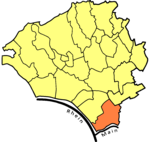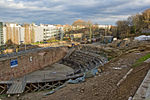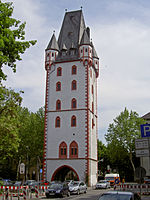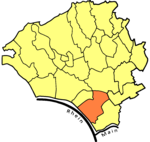Main (river)
Federal waterways in GermanyGeography of FrankfurtMain (river) basinPages including recorded pronunciationsPages with German IPA ... and 4 more
Rivers of Baden-WürttembergRivers of BavariaRivers of GermanyRivers of Hesse

The Main (German pronunciation: [ˈmaɪn] ) is the longest tributary of the Rhine. It rises as the White Main in the Fichtel Mountains of northeastern Bavaria and flows west through central Germany for 525 kilometres (326 mi) to meet the Rhine below Rüsselsheim, Hesse. The cities of Mainz and Wiesbaden are close to the confluence. The largest cities on the Main are Frankfurt am Main, Offenbach am Main and Würzburg. It is the longest river lying entirely in Germany (if the Weser-Werra are considered separate).
Excerpt from the Wikipedia article Main (river) (License: CC BY-SA 3.0, Authors, Images).Main (river)
Franziska-Retzinger-Promenade, Wiesbaden Mainz-Kostheim
Geographical coordinates (GPS) Address Nearby Places Show on map
Geographical coordinates (GPS)
| Latitude | Longitude |
|---|---|
| N 49.994444444444 ° | E 8.2933333333333 ° |
Address
Franziska-Retzinger-Promenade
Franziska-Retzinger-Promenade
55246 Wiesbaden, Mainz-Kostheim
Hesse, Germany
Open on Google Maps









